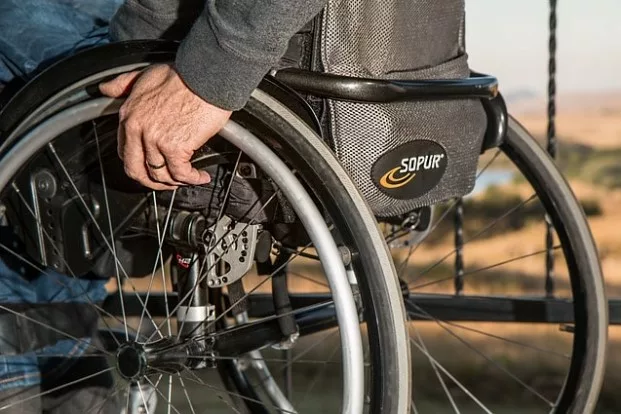Curious about how TPD insurance payouts work? At WeLifeInsure , we’ve created a comprehensive guide that walks you through the essentials of Total and Permanent Disability (TPD) insurance claims. Learn about eligibility criteria, the claims process, and potential payout amounts so you’ll know exactly what to expect every step of the way.
Explore our guide today and let WeLifeInsure help you navigate your TPD insurance claim with confidence. Contact us for personalised support on securing your financial future.
Understanding TPD Insurance Payouts
TPD insurance serves as a financial safety net for those permanently unable to work due to injury or illness. When life takes an unexpected turn and earning an income is no longer possible, total and permanent disability insurance provides crucial financial support. These payouts can help cover living expenses and medical needs, helping maintain a certain quality of life despite the circumstances.
Upon approval of a TPD claim, individuals receive a lump sum payment to support their financial needs while they cannot work. This payout can significantly alleviate the stress of managing household expenses, medical bills, and other financial obligations.

Eligibility Criteria for TPD Claims
To qualify for a TPD claim, you must have TPD cover, be unable to work for a specific time frame (usually at least 90 days), and meet your insurer’s eligibility criteria. Conditions leading to a TPD payout include physical injuries, mental illnesses, and chronic conditions that prevent work. The severity of your disability and whether it prevents you from performing any suitable work will be evaluated by your treating doctor and assessed by your insurer.

Types of TPD Insurance Policies
TPD insurance policies come in two main types: those covering the inability to work in one’s specific job (own occupation) and those covering the inability to work in any job suitable based on education and experience (any occupation). ‘Own occupation’ policies are more expensive and will not be included in superannuation options, but they provide a greater likelihood of a successful claim due to less stringent criteria.
Conversely, ‘any occupation’ policies are generally cheaper but have a higher threshold for claims, making payouts less likely. The type of TPD policy you select can significantly impact your eligibility for claims and the amount you may receive. Understanding these differences is crucial for making an informed choice about your TPD insurance.
How to Make a TPD Claim
To lodge a TPD claim, ensure you have TPD insurance cover in your superannuation and are unable to work due to disability. Meeting the criteria set out in your TPD policy is necessary for claiming a TPD payout. A successful claim requires understanding how TPD payouts work and providing the necessary documentation. Incomplete submissions can result in insurers requesting additional information, prolonging the process.
The TPD claims process varies by insurer and by super fund. If you have access to a financial adviser, TPD lawyer or insurance broker, reach out to them to help you streamline the process.
Necessary Documentation for TPD Claims
Essential documents for a TPD claim include medical evaluations and employment records that substantiate the claim. These documents validate the disability and support the claim process. Documents required will be confirmed by your insurer.
Organized documentation ensures all necessary evidence for each claim is accounted for and presented effectively, which is vital for a smooth and successful TPD claim process.
Common Reasons for TPD Claim Rejections
Non-disclosure at the time of application can result in a declined claim. It is important to adhere to your duty to take reasonable care when applying for TPD cover.
The claims process can also be prolonged due to inadequate medical evidence.
How Long Does It Take to Get a TPD Payout?
The typical duration for a TPD claim ranges from 6 to 12 months. The average time is 7.3 months as per published government data.
Incomplete documentation and complex cases can extend this timeline. After the insurance company decides, the superannuation trustee conducts a separate review that usually takes an additional one to two months.
Claimants can help reduce processing time by ensuring their initial application is thorough and complete. Being proactive and organized from the start significantly affects how quickly you receive your TPD payout.
TPD Payout Amounts
The amount you are paid will be dependent on your covered amount. If you have default insurance only, your coverage may be as little as $200,000 or less.

Is a TPD Payout Taxable?
A TPD payout is not counted as taxable income unless withdrawn from a superannuation fund. If you withdraw your payout, the tax owed varies based on your age and the date you became a member of your super fund. Individuals aged 60 or over do not have to pay tax on TPD payouts withdrawn from superannuation.
Under the preservation age, part of the withdrawal amount is tax-free, while the taxable portion incurs a tax rate of up to 22%. The tax applied when withdrawing a TPD payout from superannuation is the superannuation lump sum withdrawal tax. Ensure you seek advice from a financial adviser to understand your options at this time as tax free uplifts may also be possible.

Impact of TPD Payouts on Centrelink Benefits
A TPD payout generally does not affect Centrelink payments if the funds remain in superannuation. Interferences with temporary benefits occur when TPD is claimed while already receiving those benefits. How the payout is managed can affect your Centrelink benefits.
To maintain eligibility for Centrelink, keep the TPD payout in superannuation rather than withdrawing it. Understanding these nuances helps manage your benefits effectively and it is best to seek the services of a financial adviser.
Can You Work After Receiving a TPD Payout?
Following a TPD payout, individuals might return to work if their medical condition improves. Once a claim is finalised, you are free to do as you wish.
In many cases, receiving a TPD payout does not necessitate the repayment of funds if a person returns to work, but this can vary depending on the specifics of the insurance contract. Consulting with a healthcare provider and a legal expert ensures compliance with the terms of the insurance policy before attempting to return to work.
Statistically, about 22% of people return to work after a TPD payout. Approximately 14% of claimants were looking for a job after receiving a TPD payout. These statistics highlight the potential for a successful transition back to the workforce.
Multiple TPD Claims
People with multiple TPD insurance policies may file separate claims for each, potentially increasing their total payout if they had multiple policies. Each insurer has different requirements for TPD claims, necessitating additional documentation for multiple policies.
Job changes can result in multiple live superannuation accounts, making it common to have various TPD policies if the cover had not been reviewed prior to disability.
Seeking Legal Advice for TPD Claims
Legal assistance is essential for navigating the TPD claims process, as it often involves complex documentation. Consulting experienced TPD lawyers can streamline the process and help secure maximum entitlements. Those who don’t utilize expert help may find the process particularly stressful, leading to claim abandonment.
Working with a lawyer increases the likelihood of a successful claim outcome. TPD lawyers handle the extensive paperwork required for claims and can fight for your legal rights against insurers’ complex practices.








